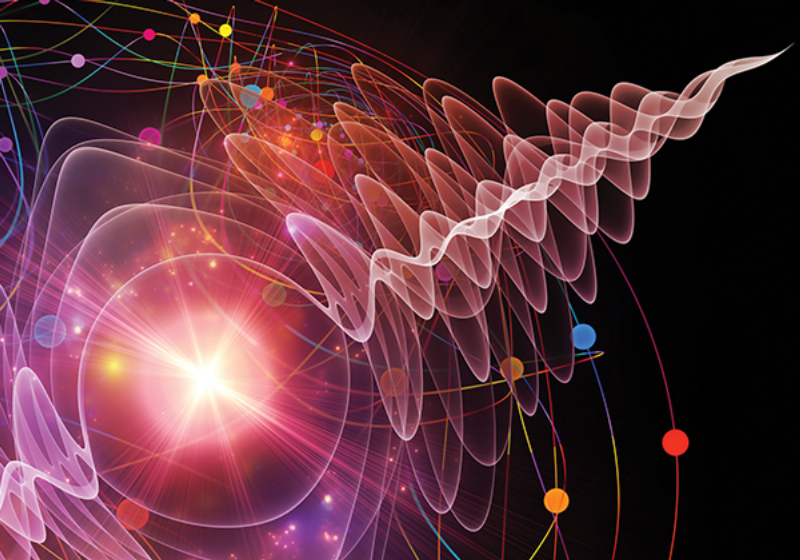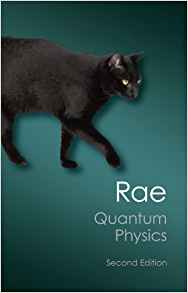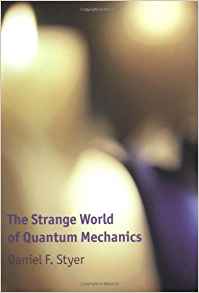Physics 150 - Schrödinger's Cat: Quantum Reality
Syllabus - Spring 2021

Classes:
Mon/Wed/Fri: 2:00 - 2:50 pm
Small Hall, room 122 (after Feb. 9) and via Zoom: cwm.zoom.us/my/davidarmstrong (before Feb. 9).
Grading Scheme:
Final Paper: 35%
Prospectus Paper: 15%
Refereeing: 5%
One-page Reaction Papers (several): 5%
Class Participation & Discussion: 20%
Homework Assignments: 20%
Text and Readings:

 The primary texts will be
The primary texts will be
-
``The Strange World of Quantum Mechanics''
by Daniel
F. Styer
(Cambridge University Press, 2000, ISBN 0 521 66780 1).
The text has a useful associated
WWW site
- check it out!
- ``Quantum Physics: Illusion or Reality?" by Alastair Rae (Cambridge University Press; 2 edition, ISBN-13: 978-9814360890)
In addition, we will include a number of other readings from the
technical and semi-technical literature; a preliminary listing
(subject to change) can be found
here. The readings will be posted on Blackboard, and
announced in class.
Homework:
There will be approximately 5 homework assignments, roughly one per
week during the first half of the course, based on readings from
Styer's text. They will be posted on Blackboard.
Reaction Papers:
There will be approximately 5 short (typically two page) papers
assigned during the first half of the course. They will be based
on selected readings from the two texts or on assigned supplementary reading.
They will be graded; if your grade on a paper is less than a B+,
you will be asked to revise the paper based on my comments and
corrections, and resubmit for a possibly improved grade.
Final Paper:
The major project for the course will be to write a "review paper",
focused on one of the possible interpretations of quantum reality that
have been discussed in the physics literature. The paper will follow the
conventions of scientific writing. Each paper will be written by a pair
of students (the majority of modern scientific papers are written
collaboratively). A prospectus (approximately 1500 words)
for each review paper
will be due three weeks before the end of the semester, which will
include an initial bibiliography. The prospectus papers will be peer-reviewed
by other class members, and editoral comments provided by the
instructor; each of you will be required to "peer review" two prospectus
papers. You will be graded on the quality of your peer reviews (a grading
rubic will be provided).
Armed with the peer reviews and editorial critique of your papers, you
and your partner will then complete the review paper (approximately
4000 words), which will be due on May 13 (the nominal final exam date for
the course). While the
researching and crafting of the review paper will be collaborative,
the paper should be divided into logically distinct subsections, with
one or the other co-author assigned primary responsibility for writing
each of the sections (these assignments need to be provided to the
me).
There will be class periods dedicated during the semester to searching
and evaluating the scientific literature, to scientific/scholarly
writing, to appropriate citation style, and to peer-reviewing.
Course Content
Quantum mechanics is the basis for almost all of modern physics, and
it is accepted essentially without question by scientists. Certain
aspects of quantum mechanics, lying both in the axioms at its
foundations, and in the behavior that it predicts, are quite
counter-intuitive. Thus, the practicing physicist learns to abandon
some of his or her intuitive assumptions about the way nature "must"
behave.
The need to abandon these assumptions has profound philosophical
implications. Questions arise such as: whether or not determinism can be
salvaged, what is the role of the observer (and human consciousness)
in a measurement, and even if strict causality (i.e. cause always
preceding effect) is obeyed in nature. The "received wisdom" for a
conceptual framework in which to place quantum physics is the
so-called "Copenhagen Interpretation". In this interpretation,
Schrödinger's famous cat can be simultaneously alive and dead, until
it is observed. It is not clear that this is a philosophically
acceptable interpretation, and it is certainly far from clear that it
is the only interpretation that is both logically consistent and not
in contradiction with the ultimate arbiter, experiment. A wealth of
work has been done by both philosophers and physicists on the
interpretation problem, and several alternative interpretations have
been proposed.
The course will closely examine two experiments, the double-slit
electron experiment, and the EPR correlation experiment, as a focus
for our introduction to quantum physics. A careful study of both of
these systems will lead us to all the challenging questions of the
interpretation of quantum mechanics, and the nature of reality.
The course will use two experiments, the double-slit
electron experiment, and the EPR correlation experiment(s), as the focus
of our introduction to quantum physics. A careful study of both of these
systems will lead us to all the challenging questions of the
interpretation of quantum mechanics, and the nature of reality.
Supplemental reading will be done using various articles in the technical and
semi-technical literature, i.e. from sources such as
Physics Today,
The American Journal of Physics,
and
The Physics Teacher.
We will read and critically analyze a number of popular science
treatments of the subject, and delve into several of the alternatives
to the Copenhagen interpretation.
Learning Objectives
- To understand the experimental results that lead to the quantum interpretation problem.
- To understand and be able to articulate several key concepts in quantum theory.
- To be able to find, read and critically analyze appropriate scientific papers, and to understand the role and importance of citations in academic literature, as well as ethical issues related to scientific publication.
- To develop skill in academic writing in science, in particular, how to structure a paper, how to produce a synopsis of previous work, and how to generate a clear argument.
- To learn to distinguish between popular and academic science sources.
Important Dates
- End of Add/Drop period: Fri Feb. 5
- Last Day for Withdrawl: Mon Mar. 29
- Prospectus Paper due: Fri Apr. 23
- Refereeing reports due: Fri Apr. 30
- Final Paper due: Thu May 13, 2:00 PM
COLL 150
PHYS 150 satisfies William & Mary's COLL 150 requirement as a
component of the general education ("COLL") curriculum. Coll 150
courses delve into a focused subject, giving students an opportunity
for in-depth analysis, discussion and interpretation. They are intended to be
writing-intensive, and will serve to develop your skills in academic
writing.
Accesibility
William & Mary accommodates students with disabilities in accordance
with federal laws and university policy. Any student who feels they
may need an accommodation based on the impact of a learning,
psychiatric, physical, or chronic health diagnosis should contact
Student Accessibility Services staff at 757-221-2512 or at sas@wm.edu
to determine if accommodations are warranted and to obtain an official
letter of accommodation. For more information, please see
www.wm.edu/sas.
Honor Code
William & Mary has had an Honor Code
since at least 1779. Academic
integrity is at the heart of the university, and we all are
responsible for upholding the ideals of honor and integrity. The
student-led honor system is responsible for resolving any suspected
violations of the Honor Code, and I will report all suspected
instances of academic dishonesty to the honor system. The
Student Handbook includes your responsibilities
as a student. Your full participation and observance of the Honor Code
is expected.
COVID-19
We will do the utmost to help keep each other healthy. Face masks and social distancing will be required for in-person classes, following the Healthy Together Committment of W&M's Path Forward. Please only sit in marked seats in class. Office hours will generally be held via Zoom videoconference.
http://physics.wm.edu/~armd/P150.html
Dept. of Physics
William and Mary
armd@jlab.org
last updated: Mar 29 2021


 The primary texts will be
The primary texts will be